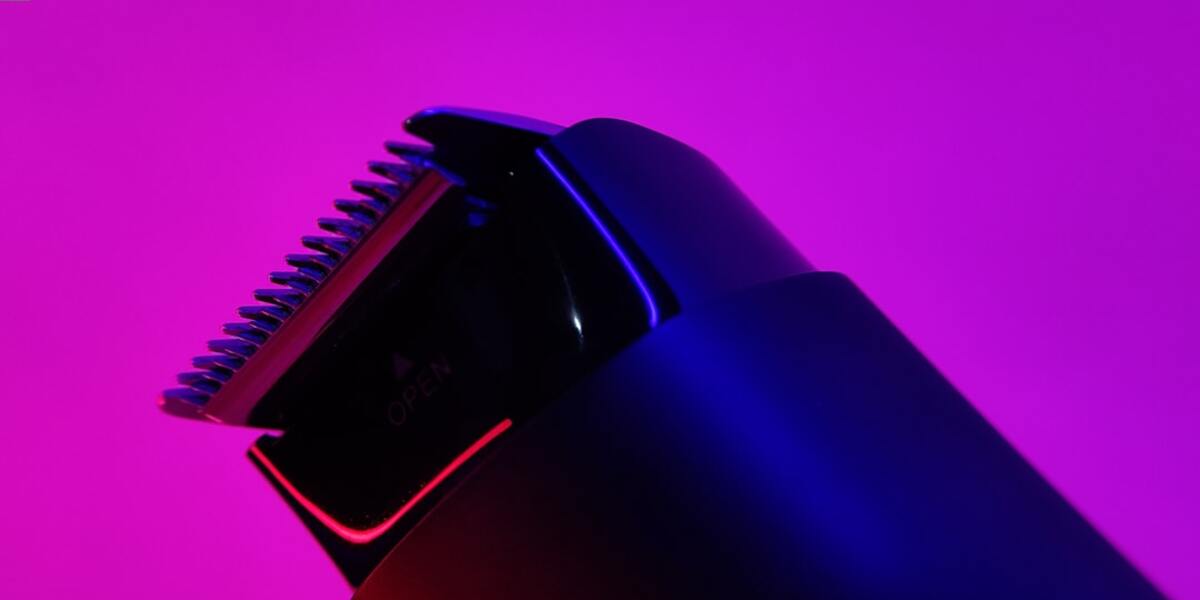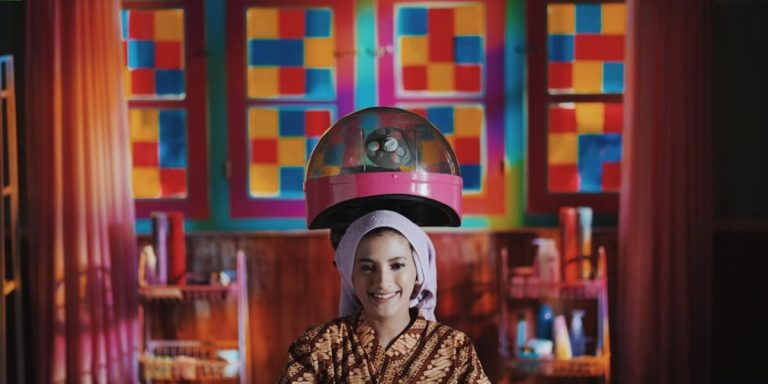Curly Hair Care for Kids: Essential Guide to Maintain Lustrous Curls
Curly hair often gets a reputation for being unruly. When it comes to caring for kids’ curly hair, the challenge doubles. However, with the right knowledge and techniques, you can maintain those adorable spirals as effortlessly as straight tresses.
This blog is specifically designed to help you define curls and master moisture in a kid’s delicate mane.
In this comprehensive guide, we will equip you with useful information about understanding your child’s unique curl pattern and texture. Furthermore, it offers effective advice on repairing damage, reducing frizz and preventing common problems associated with curly hair maintenance in children.
Did you know?
Did you know? Curly hair is actually genetically determined and it’s more susceptible to damage due to its spiral structure which can create weak points along the strand.
Understanding Curly Hair Types in Children
Understanding the types of curly hair in children is vital for providing appropriate care, as curly hair presents unique challenges due to its distinctive and captivating spirals. Children’s hair tends to be more sensitive than adults’ and they are less likely to tolerate uncomfortable detangling sessions or lengthy hair routines.
Identify your child’s curl type to properly care for their curly hair. The four main types are:
- Wavy (Type 2)
- Curly (Type 3)
- Coily (Type 4a)
- Kinky (Types 4b & c)
Each type requires specific attention to hydration, product use, detangling methods, and styling considerations.
Consider the texture – thin or thick – when structuring a suitable hair care regime. For instance:
- A child with coarse Type 4c curls should receive regular deep conditioning treatments.
- A child with fine Type 2 waves might benefit from lighter products that do not weigh down their hair.
In conclusion, understand your child’s strand pattern to:
- Create a viable routine
- Instill pride in their natural beauty as they grow
Take time today to discover why each curl bounces uniquely. Recognizing the uniqueness of each coil turns every day into a good hair day!
Identifying Your Child’s Curl Pattern
Identifying the curl pattern of your child’s hair is an essential step in mastering curly hair care for kids. It not only gives you a glimpse into their genetic makeup but also helps you decide on suitable products, styles and maintenance routines.
Firstly, observe the shape formed by individual strands of your child’s hair. Does it coil like a spring or meander like an ‘S’? This will be indicative of whether they have loose, medium or tight curls.
Loose curls are usually large and round with spirals similar to corkscrews at the end. For this type, consider using gentle moisturizing shampoos and conditioners that hydrate without weighing down these buoyant locks.
Medium curls typically take up more space than loose ones due to their tighter spiral formation – think pencil-sized coils! These require deep conditioning treatments every few weeks as children playing outdoors could lead to dryness quickly within those twirls!
However, remember that there can certainly exist mixes between these categories too- each lock may differ from one another! So keep close attention during bath times when your little ones’ crowns unfurl gloriously before you; helping steer clear off surprises later!
The Importance of Knowing Your Child’s Hair Porosity
An integral facet of curly hair care for kids lies in understanding your child’s hair porosity. Hair porosity refers to the ability of your child’s hair strands to absorb and retain moisture. It directly affects how well oils, conditioners or treatments penetrate the hair fibres.
Understanding hair porosity can greatly enhance their daily routine. Here are key reasons why knowing the degree of porosity is crucial for effective curly hair maintenance:
- It determines how well your child’s hair retains moisture.
- It influences the choice of hair care products.
- It affects how their curls respond to humidity and styling products.
- It helps in creating a tailored care regimen that keeps their curls healthy and vibrant.
1. Customizes Care: Just as no two snowflakes are alike, every curl type differs too! Being aware of where on the spectrum from low to high porosity their mane falls enables personalized care tactics tailored precisely towards its needs.
2. Enhances Moisture Retention: For luscious curls that bounce with joy rather than stay sad and frizzy, hydrating them adequately comes paramountly into play—something determined by their level of porousness!
3.Hair Health Indicator: Regular dry spells despite zealous conditioning? A strong sign they have low-porosity tresses needing extra attention right there!
4.Places Products Strategically: Curlier tendrils cling more onto products due to being higher up on porousness scale—a trait which when known helps select lighter ones not weighing down these cute loops unnecessarily but instead nurturing them.
Establishing a Gentle Hair Care Routine for Kids with Curly Hair
Establish an appropriate care routine as the first step towards maintaining a child’s curly hair’s health and beauty. Remember that children have more delicate hair than adults because they are in a growing phase, requiring a gentle approach that still provides nourishment and protection.
Pay extra attention to these locks since they are prone to dryness and damage if not handled correctly. Identify suitable products tailored for kid-friendly usage, as this is paramount for their care.
Understand your child’s unique hair texture through trial and error. For fine curls, lightweight conditioners might be more effective. Conversely, heavy-duty conditioning treatments often work better on coarser textures.
Detangling is another critical component of this routine. Curly hair easily forms knots, leading to discomfort during combing. To ensure tangle-free experiences, parents should:
- Choose wide-tooth combs.
- Use moisturizer-infused sprays designed for detangling.
These tools make grooming less stressful and promote healthy hair growth.
To round off these efforts periodically incorporate deep-conditioning sessions ensuring consistent hydration levels across strands preventing potential fallout caused by parched conditions prevalent particularly amongst curled hair types.
In conclusion always remember patience forms one key ingredient successful maintenance kids’ demands offering nurturing environment where they thrive showcasing true splendor inherent them- now practical manageable terms!
Choosing the Right Products for Delicate Curls
Choosing the right hair care products is pivotal in maintaining and enhancing your child’s curly locks. The market may be saturated with a plethora of choices, but not all are suitable for “curly hair care for kids”. Here are some tips to find the ideal contender.
Place selective shampooing at the core of your stellar curly-hair regimen. Achieve optimal hygiene without daily lathering that can strip delicate curls of natural oils crucial for healthy growth. Engage in selective shampooing every few days using mild shampoos specifically designed for your curls’ texture.
Conditioners are crucial for effective curly hair care for kids. They provide nutrition that regular shampoos might miss, adding moisture and enhancing smoothness and shine. They also help to prevent frizz, a common issue with curly hair often called ‘curl attitude’. Look for conditioners with ingredients like Shea Butter or Aloe Vera extracts; these are renowned for their hydrating properties.
Another pertinent tip when choosing suitable items is to appreciate nature’s offerings: organic products. They contain fewer chemicals, posing less risk of causing undesired reactions such as scalp irritations that could compromise optimal growth and possibly dent self-esteem years later. Going green, therefore, isn’t just about saving our planet—it also ensures radiant locks!
Step-by-Step Guide to Washing and Conditioning
Starting a wash and condition routine for your child’s curls may seem daunting. Yet, with the right steps in place, curly hair care for kids can be easily managed.
1. Wet Hair Thoroughly: Start by ensuring that every strand is completely soaked in water before applying any hair products. This helps reduce tangles and makes it easier to apply the shampoo or conditioner evenly.
2. Use Sulfate-Free Shampoo: When selecting a shampoo, opt for one that’s sulfate-free as it will cleanse without stripping natural oils from the scalp which are essential for curl health.
4.Repeat If Necessary : Sometimes you might need two rounds of washing especially if there is build up on their scalps like oil or dirt . Always ensure you rinse out all foam as residue could turn irritating .
6.Create Magic Detangling Potion : To make detangling less painful , have wide-tooth comb handy while rinsing off conditioner.Don’t rush through this—be patient.
Managing Tangles and Frizz in Children’s Curly Hair
An increasing number of kids are flaunting their natural curly hair, highlighting the need for specialized care. Managing tangles and frizz in children’s curly hair may seem tough, but with the right techniques, you can master it. If your child has beautiful curls, learn the proper management methods to preserve their bounce and shine while minimizing breakage or damage.
Remember: Curly strands are structurally different compared to straight ones. They typically have a coarser texture that makes them prone to dryness and frizzing; phenomena even more prevalent with seasonal changes such as high humidity during summers or dry air through winters of 2023.
Incorporate gentle shampoos into your child’s routine, choosing those free from harsh chemicals like sulfates. Add hydrating conditioners enriched with nourishing ingredients such as shea butter and coconut oil to prevent tangling by providing intense hydration to parched hair follicles.
Techniques for Detangling Without Tears or Damage
Firstly, wet detangling is a vital part of “curly hair care for kids”. Always ensure that the child’s hair is damp before attempting to detangle it. Wetting helps smooth out knots, making them easier to handle without causing breakage.
When you brush or comb through your child’s curls, always start at the ends and work towards the roots in small sections – this technique reduces strain on matted areas preventing unnecessary pullout or damage.
Use quality tools to make a significant difference during detangling sessions. Use wide-toothed combs or brushes designed for curly hair knots, such as natural boar bristle brushes that glide smoothly, ensure gentler action on strands, and limit potential harm.
Apply a mixture of conditioner and water to stubborn areas with tighter curls for easier detangling. This provides extra slip, simplifies the process, and significantly reduces pain. Transform even the wildest bed-heads into manageable soft waves, creating joyful smiles as powerful morning sunbeams replace dreaded tantrums from unmanageable tresses. Say goodbye to incidents from earlier days.
Daily Practices to Maintain Moisture and Reduce Frizz
Starting with a good hair care routine is vital for children, especially those gifted with curly hair. Here’s how you can manage and maintain your child’s curls using the right daily practices.
Moisturizing plays a crucial role in any “curly hair care for kids” routine. Curly hair needs more moisture than straight hair because it’s naturally drier. Choose mild shampoos free from harsh chemicals such as sulfates and parabens to avoid stripping away natural oils while still cleaning effectively.
Follow up shampooing with an antioxidant-rich conditioner designed for curls; this not only seals moisture inside each strand but also fights frizz by smoothing cuticles. Regular conditioning improves the elasticity of the tresses making them less prone to breakage or damage when combed or styled.
Conclusion
Master the art of curly hair care for kids by treating it like an exciting adventure. Those adorable, unruly curls will turn into your child’s crowning glory with proper guidance and consistent effort. Remember – patience and persistence are key on this journey.
Equipped with our essential guide to maintaining lustrous curls, implement these simple yet effective techniques into your little one’s hair routine. For insights on maintaining all types of locks—from straight to wavy or kinky—browse our website. We share expert tips showcasing the best practices in hair care and maintenance regularly. Let us help make every day a good hair day!







